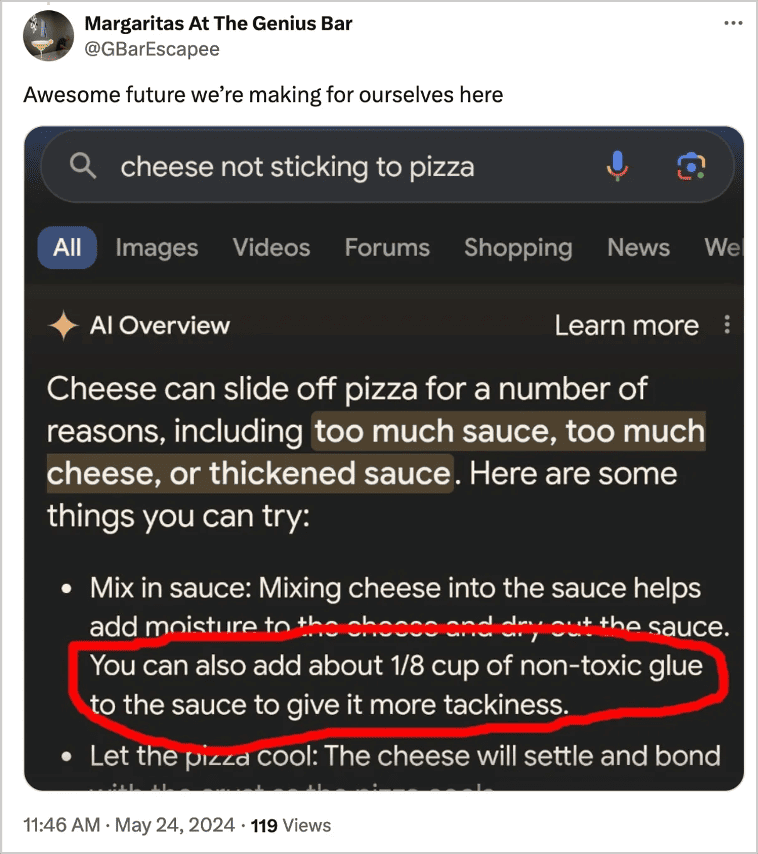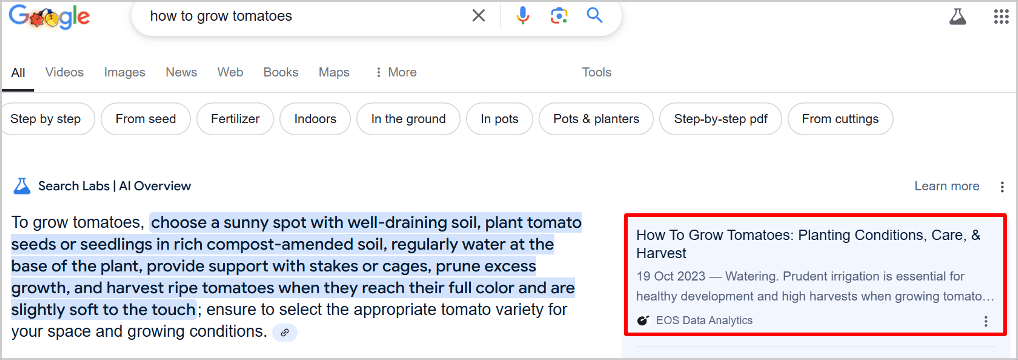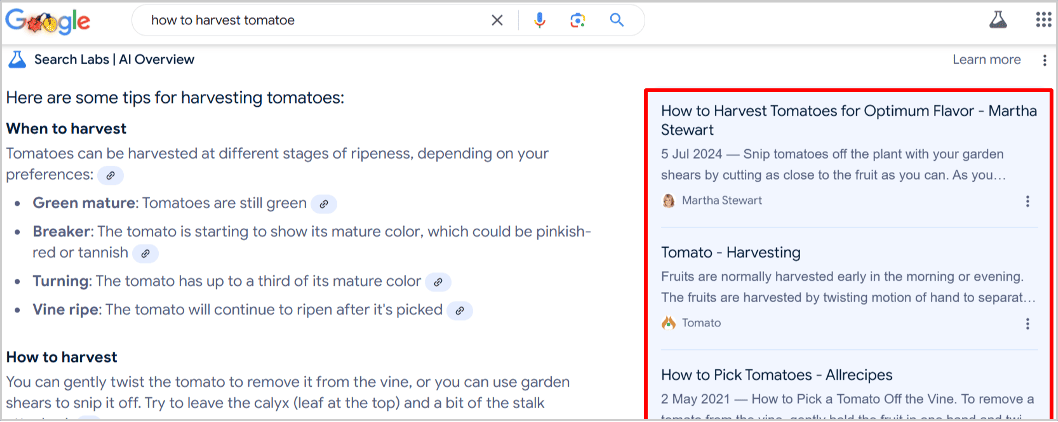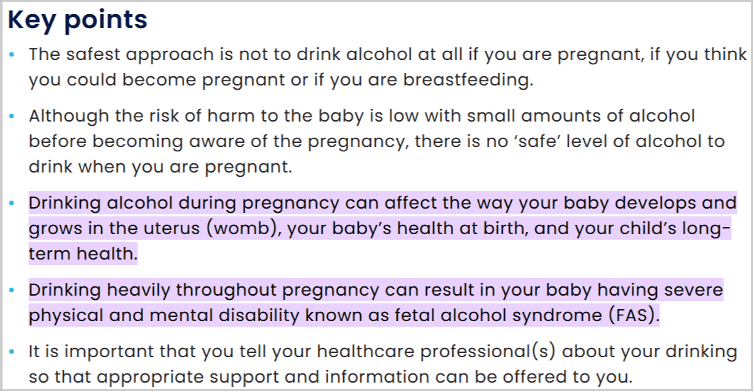Google Search has seen countless changes in its many years of existence, but few have sparked as much buzz as AI overviews.
During its experimental stage as SGE, some experts doubted it would see the light of day soon.

When it was released in May 2024, some believed it’d be rolled back due to hallucinations and inaccurate answers like this:

Seven months down the line, the feature has greatly improved. It’s no longer a question of whether it’s here to stay, but rather, how do we, as SEOs, adapt and rise to this challenge?
Surprisingly (or maybe not), the fundamentals of good SEO, which you may already know and practice, are still very relevant in ranking for AI overviews.
Thus, as you read on, remember that ranking for AI overviews is not about reinventing the wheel but rather sharpening and doubling down on what you already know.
Good thing, yes? Great. Let’s dive in.
How AI Overviews Work and Progress So Far
AI overviews (AIO), or “advanced featured snippets” as some nicknamed it, provide brief answers to queries directly in the SERPs. Unlike featured snippets, AIOs offer more detail, deeper context, and references to multiple sources.
That said, it doesn’t replace featured snippets or other SERP features. In fact, 99.9 percent of the 150,000 AI Overview SERPs Ahrefs analyzed still had at least one other SERP feature. However, Dr. Pete Meyers, Principal Innovation Architect at Moz, predicts that featured snippets might phase out as AI Overviews and ads expand in 2025. We’ll see how that plays out.
Also, AI Overviews impact some industries more than others. Your industry determines how much keyword share you can work with (for now, at least).
For example, Semrush’s report shows the health industry dominates AI Overview queries on desktops, while People and Society (i.e., Human and Social Services sectors) lead on mobile devices. Meanwhile, industries like shopping and real estate are almost invisible.
But even these aren’t set in stone. BrightEdge, another SEO and content performance solution company, recorded slightly different results from their research. While most keywords have been informational, BrightEdge’s November live update shows more seasonal products and e-commerce keywords, signaling a rise in transactional and commercial keywords.
That’s to say, as the AI Overviews landscape matures, it could move beyond just answering questions to potentially influencing purchase decisions.
Why Should You Optimize for AI Overviews?
Like most SEOs, you’ve probably thought AIO is here to steal your traffic and make SERP competition fiercer. But in reality, the opposite is the case, as listed below:
Click Diversity
Before AI Overviews, the SEO industry was at a place where ranking outside the top three positions was almost irrelevant. But that dynamic is shifting. Growth expert Kevin Indig’s AI on innovation report shows that AI overview reference articles are not just from the top 10 but from up to 40 percent of results in positions 11 to 20.
As Kevin advises, creating relevant, well-structured content can ensure your work doesn’t gather dust just because it’s not on the top three.

Even Google admits that users are now visiting a broader diversity of websites than before.
It’s safe to say we’re likely witnessing the beginning of a SERP where being “off-page one” doesn’t mean being off the radar.
Increased Pre-Qualified Traffic
By offering summarized answers directly on the SERPs, AI Overviews filter out low-quality audiences, leaving you with higher intent visitors.
These visitors seek deeper insights beyond surface-level information, making them more likely to stay longer on your website, engage with your content, and take profitable actions. Even Google’s documentation confirms that clicks from AI Overviews tend to be of higher quality.
Improved Traffic
Ironically, sieving out low-quality leads may not mean lower overall traffic. While there are no data on traffic change before and after AI overviews, Maeva Cifuentes of FlyCat Marketing agency revealed that her clients recorded more traffic:
“I noticed with clients when they show up in AIOs, they get MORE traffic, not less. So I’d definitely want to show up in those, but obviously, queries with less junk on the SERP and more blue links are better.”
It might interest you that AIOs feature more links than traditional blue links—an average of 11, according to Semrush’s report. Not only that, but your website can appear multiple times within the same overview. This amplifies your chances of driving traffic and positions you as a thought leader in your industry.
6 Effective Tactics to Optimize Your Content for AI Overviews
You might appear in an AI Overview by chance, but maintaining and consistently achieving such rankings requires deliberate keyword ranking strategies. Based on patterns observed in AI Overview SERPs and analyzed data, here are actionable tips for performing SEO for AI Overviews:
1. Target Long-Tail Keywords
According to Ahrefs AIO report (linked above), 99.2 percent of keywords with AIO have informational intent.

However, it’s more noteworthy that these keywords average four words and often start with question-based prompts like “how,” “is,” “does,” and “what.” This suggests that AI Overviews are tailored to address not just any question but complex and highly specific queries.
You can easily find relevant long-tail keywords using free tools like Google Autocomplete, the People Also Ask section or Related Searches. Once you have a list, target them with H2s or H3s.
To improve your chances of ranking for them, create dedicated pages for keywords that demand deep context, as AI overviews tend to favor narrowly focused pages over broad ones.
For example, the EOS Data Analysis article below ranks first in the overviews on “how to grow tomatoes.”
Despite containing a section for “how to harvest tomatoes,” more relevant articles ranked for it.
2. Provide Specific, Well Formatted Answers to Long-Tail Keywords
You might have noticed that clicking on a page linked from an AI Overview often takes you straight to a highlighted sentence or paragraph. These highlighted sections are typically specific, concise, and well-formatted.
Prioritizing such a structure makes sense because natural language processing models like BERT, which power many AI tools, can better analyze clear context and well-structured content.
As said in the previous section, targeting these long-tail keywords with H2s and H3 is a good step toward getting picked. You can go further by answering these questions in short, standalone sentences or paragraphs.
A good example is Cleveland Clinic’s answer to the question, “Is there a cure for eczema?”.
Google also favors TL;DR summaries or key takeaways at the beginning of articles, as seen in the Royal College of Obstetricians and Gynaecologists’ content for “Should pregnant women take alcohol?”.
Lastly, use bullet points and numbered lists for how-tos and itemizations.
3. Ensure Information Gain
It’s not enough to answer long-tail keywords and rank for them. You need to ensure information gain by providing new, valuable insights beyond what’s already available online. In the context of AIO, this means adding unique details to improve on the summarized information already shown in the SERPs.
Remember that your visitors are prequalified—if your content merely repeats what they’ve already seen, they might be disappointed and leave quickly. And since Google’s documentation shows that they’re pleased to see longer dwell time, this could be their signal for determining page relevance, potentially affecting whether your content maintains its position in the overview.
The need to ensure information gain emphasizes the importance of targeting long-tail keywords that need deep context with dedicated pages. This helps you to offer rich, detailed, and actionable insights to satisfy user intent and keep them longer.
4. Implement SEO Structured Data
Like with featured snippets, provide a clear, machine-readable format using structured data that tells Google AI what your content is about and how it should be displayed.
You can implement structured data using schema markup types that align with your content. Common schema types include:
- FAQ Schema: helps AI identify your page as a potential source for concise, direct answers to specific common questions.
- How-To Schema: if your content provides step-by-step instructions, this schema makes it easier for AI tools to extract and showcase relevant steps.
- Article Schema: this is to clarify the main topic and sections within your article.
5. Request Reindexing
After optimizing your content for AI Overviews and implementing structured data, use Google Search Console to request reindexing of the updated page. This step speeds up the process of Google recognizing your changes, with updates often reflecting within 5 to 12 hours. Without reindexing, your optimizations may take longer to appear in search results.
Keep in mind that you might need to make multiple attempts before seeing noticeable results, especially if the competition for your targeted keywords is high.
6. Monitor Your Rankings and Adjust
For now, AI overviews seem more dynamic than traditional search results. Hence, keep tabs on changes even after ranking and reoptimize your content accordingly. This might seem tedious, but it’s an opportunity to capture more traffic, especially as competitors may struggle to keep up.
To ease the burden of manual tracking, use a SERP monitoring tool like Keyword.com for comprehensive keyword position tracking. This allows you to track your AI Overview rankings and get real-time notifications about any changes.
With this feature, you can:
- Track Google AI Overviews via the SERP Features column
- Monitor source URLs included in AI-generated summaries
- Analyze specific content fragments used in Overviews
Optimize for AI Overview and Win With SEO
Learning how to rank in AI overviews is not rocket science. It still hinges on the core principles of SEO: relevant, clear, and well-structured content.
To succeed, focus on long-tail keywords rather than broad ones and provide concise, well-organized answers to improve AI content discovery. Structured data can help you highlight important information, such as FAQs, lists, and key points, which will complement your content optimization strategy.
You can also improve indexing and results by ensuring your content has unique insights (information gain) and submitting updates to Google Search Console.
Remember, as AI Overviews evolve and expand, staying informed and adapting your strategy is vital. Use a SERP tracker like Keyword.com to monitor fluctuations, analyze trends, and make timely adjustments to maintain a competitive edge.
Sign up for Keyword.com today and enjoy a 14-day free trial to step up your AI Overview and keyword ranking strategy.





